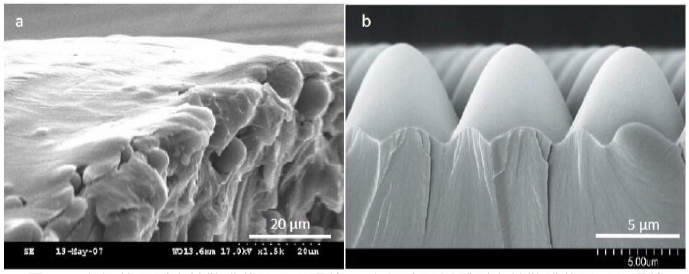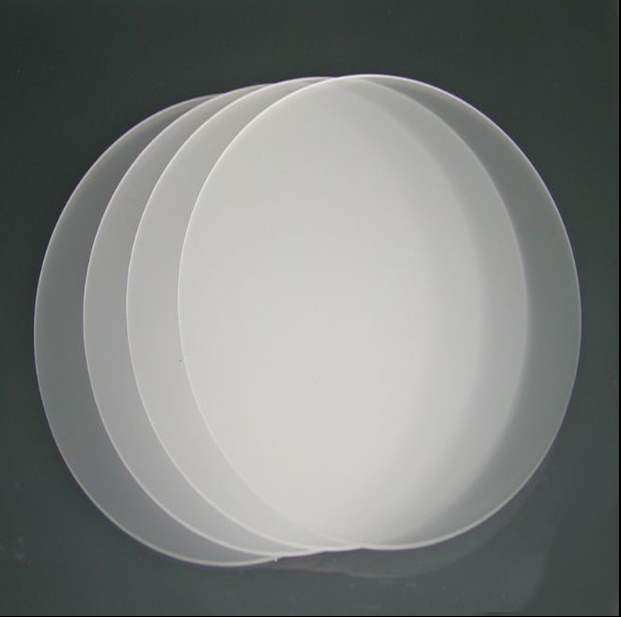The structure of the photodiffusion film is basically the same, which is mainly composed of three layers, including scratch resistance layer, substrate layer and diffusion layer. Substrate organic thin film materials such as poly (methyl methacrylate) (Polymethyl Methacrylate,PMMA), polyethylene terephthalate (Polyethylene Terephthalate,PET), polycarbonate (Polycarbonate,PC) and so on. The preparation of the diffusion layer is accomplished by coating the surface of the film with inorganic or organic light diffusion particles or preparing micro-nano structure. How the light diffusion film works: light incident from one side of the scratch resistant layer, then through the transparent PET (or PC, PMMA) substrate, and then scattered by the diffusion particles scattered in the diffusion layer, or the designed surface microstructure to achieve the light diffusion effect. By changing the propagation route of a large amount of light, a uniform line light source or surface light source with directional diffusion is formed.
According to the working principle, light diffusion films can be divided into two main types: particle type and surface embossed type, as shown in figure 1-3 (a murb). The particle-type light diffusion film uses micro-and nano-scale diffusion particles to scatter light, which makes the incident light more uniform and softer. Diffusion particles are also often referred to as light diffusers, which can be divided into inorganic, organic and inorganic-organic composite light diffusers according to their composition. Organic light diffusers (such as polymethyl methacrylate (PMMA) , polysiloxane (silicone) , and polystyrene (PS) ) are transparent microspheres that can pass through light directly and have very little light loss in the process of propagation. At present, the mainstream light diffuser in the market is basically organic light diffuser. Inorganic light diffuser (such as titanium dioxide (TiO2) ) appears as a solid opaque sphere microscopically, the incident light can not pass directly, but can only refract, resulting in the loss of light energy and the decrease of transmittance. Organic / inorganic composite particles is a new type of optical diffuser in recent years, because of a series of novel functions due to the special structure of the inner and outer bilayers of core-shell hybrid microspheres, but the preparation process of the composite particles is complex and is not suitable for large-scale production.

(b) SEM photos of the cross-section of the surface relief light diffusion film
Most of the diffused particles are spherical structures and their functions are similar to those of microlenses. When passing through these particles, the light is focused and then scattered to a certain range of exit angle, which has the function of enhancing the brightness of the outgoing light. In addition, the difference between the diameter of the diffusion particles and the refractive index of the film-forming resin also ensures that the light does not shine directly from the diffusion film, providing anti-glare effect and uniform brightness. However, the random scattering of incident light by diffused particles results in low light utilization efficiency. The addition of high concentration of diffuser will also lead to significant backscattering, thus reducing the transmittance of the light diffusion film.
The surface relief light diffusion film uses the refraction and reflection of the surface periodic or randomly distributed microstructure to modulate the optical state of the incident light. This kind of light diffusion film has the advantages of wide viewing angle, high transmittance and low ambient light reflection. At present, the microstructures that have been studied and used include holography, cylindrical lens, microlens array and stretchable diffraction grating. Therefore, the surface embossed optical diffusion film is the most promising solution that can design the characteristics of the diffusion film according to the requirements.

According to the use, the light diffusion film can be divided into brightening type, reflection type, etc.; according to the different materials of the substrate layer, it can be divided into no substrate, PET substrate, PP substrate and PMMA substrate, etc.; according to different production methods, it can be divided into the coating and non-coating type. At present, the integration of multiple functions on the single diffusion film is the main research and development trend of the optical diffusion film. For example, through the multi-functional design of 3M company, the single film integrates the functions of diffusion film and prism film. The diffusion film is prepared by duplicating the microstructure on the surface of the particle diffusion film by mechanical roller imprinting technology so that the single-tensioned film can be thinned instead of the multi-tensioned film. It meets the needs of lightweight development of LCD display, LED lighting, beam shaping, thin-film solar cells and other products .

